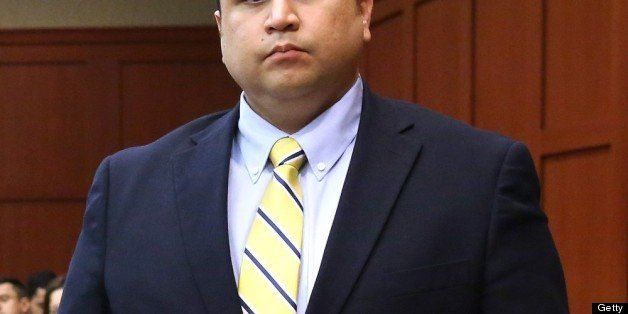
During his cross-examination of Officer Chris Serino last Monday, Mark O'Mara, George Zimmerman's lawyer, asked Serino a highly improper question. After establishing that there were no significant discrepancies between Zimmerman's description of his encounter with Trayvon Martin and the physical evidence and statements from neighbors, O'Mara asked Serino: "Do you think he was telling the truth?" Without any objection from the prosecution, Serino answered "Yes." The judge then recessed for the day.
The following morning, after hearing arguments from the prosecution, the judge instructed the jury to ignore Serino's comment that he believed Zimmerman was telling the truth. The judge's instruction to the jury to disregard Serino's comment was clearly correct. It is a well-established rule of courtroom testimony that a witness is forbidden from commenting on the credibility of another witness, or as in this case, the credibility of Zimmerman. It is the exclusive function of the jury to make determinations of credibility, and a lawyer subverts this principle when he or she invites a witness to endorse the credibility of someone else. Indeed, convictions in child sexual abuse, domestic violence, rape, and drug prosecutions have been reversed when prosecutors asked experts to give opinions that validate a victim's or a witness's truthfulness, or even assert that a victim has in fact been abused.
The judge's instruction is familiar to persons who follow jury trials. Courts are committed to the theory that juries can disregard prejudicial evidence or improper conduct when properly instructed by the trial judge. Such "protective" or "curative" instructions are used to advise the jury to erase from its collective consciousness a prejudicial event that has occurred during the trial that may likely distort its deliberations and verdict. Such instructions are commonly used when inadmissible evidence has been received, or prejudicial remarks are made by counsel, witness, or even the judge, or any other occurrence that could impair the integrity of the trial. Indeed, if the error or misconduct is serious enough, the judge could declare a mistrial.
But regardless of the theory behind such curative instructions, the bigger question is whether juries are capable of following such an instruction. One is reminded of the courtroom moment in the classic film Anatomy of a Murder when the defense attorney, played by Jimmy Stewart, is cross-examining the prosecution's medical examiner in a murder case in which the defendant claimed the victim had just raped his wife. After getting the doctor to admit that his examination could have revealed that the deceased had recently ejaculated, thereby supporting the defense, Stewart then asks whether the witness was instructed by the prosecutor to conduct an examination that only would be useful to the prosecution, but none that would be useful to the defense. The prosecutor screams an objection and the judge, noting the impropriety of the question, instructs the jury that the question would be stricken and to disregard the question. Stewart the returns to counsel table, his associate smiles, and his client whispers, "How can a jury disregard something they've already heard?" Stewart answers, "They can't. They can't."
Instructing a jury to disregard something they've already heard has been assailed as a fiction, a judicial fraud, and tantamount to telling a jury to "un-ring a bell." If anybody happens to be reading this post, I would ask the reader, as I ask students in my evidence class, not to think about a pink elephant. In fact, such instructions may be counter-productive in calling the jury's attention to matters that it otherwise may have already forgotten, or, as in the Zimmerman case, give added prominence to testimony that the jury has absorbed for several hours.
Are juries capable or willing to follow such instructions? Or, to be more precise, will the Zimmerman jury follow the judge's instruction to disregard Serino's testimony that he believed Zimmerman was telling the truth? Apart from our intuition, psychological studies of jury decision-making suggest that jurors are not successful at ignoring information they have been given, even when a judge instructs them to disregard the information. Although it is not a simple task to analyze why a judge's instruction to a jury to disregard information is ineffective, it is possible from the studies to conclude that juror decisions are influenced by attitudes and biases about crime, police, the justice system, and about the outcome of a case that they believe may be just.
So, will the Zimmerman jury follow the judge's instruction? Or will it be influenced by Serino's assertion of Zimmerman's truthfulness? We'll see.